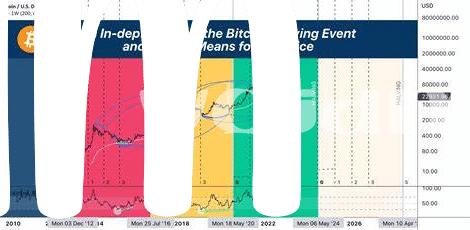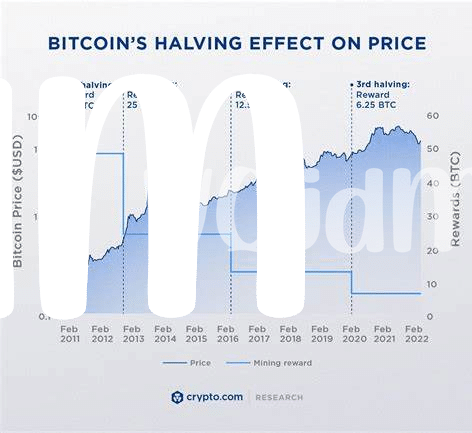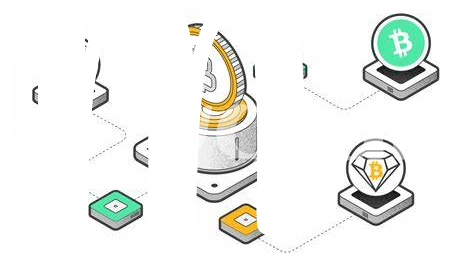Decoding Bitcoin Forks: What🍴happens Exactly?

Imagine walking into a room where everyone is speaking the same language, and then suddenly, a group decides they want to start speaking a slightly different dialect. This is a bit like what happens in the world of Bitcoin when we talk about “forks.” Essentially, a fork occurs when the people who oversee the computer code for Bitcoin disagree on the best direction forward. They might have different ideas about improving security, how transactions are processed, or how to make Bitcoin better overall. When they can’t agree, the blockchain — the digital ledger that records all Bitcoin transactions — splits into two paths. Each path follows a different set of rules, creating a new, separate version of Bitcoin.
These events are crucial because they show how the Bitcoin community responds to challenges and disagreements. It’s a kind of democracy in action within the digital world. Here’s a simple way to understand the main types of Bitcoin forks:
| Type of Fork | Description |
|---|---|
| Hard Fork | This creates a new blockchain that splits from the original, requiring all users to update to the latest version of the software. |
| Soft Fork | A more gentle update that doesn’t create a new blockchain but still introduces changes to the existing system. Not all users need to update immediately. |
Each fork, whether it’s creating a whole new currency or just tweaking the existing system, throws a pebble into the pond of the cryptocurrency market, causing ripples that affect prices, investor confidence, and even the future direction of Bitcoin itself.
Understanding the Why: Motives Behind Forks🤔
Ever wondered why folks decide to make a new version of Bitcoin? It’s kind of like deciding to take a familiar recipe and daring to toss in a new ingredient to see if it can become even more amazing. This process of creating a new pathway from the original Bitcoin is what we call a ‘fork.’ People behind these forks have various reasons. Some believe Bitcoin could be improved—maybe make transactions quicker, enhance security, or even make it more private. Basically, they’re looking to solve problems or add features they think are missing. It’s like a group of chefs debating the best way to bake a cake, and then deciding to try different methods to see which works best.
On another note, these changes are not just for fun or out of boredom. They represent real belief systems about what Bitcoin should be. It’s kind of a big deal because it affects everything from the value of these cryptocurrencies to how easily we can use them. If you’re curious about where Bitcoin might be heading in the future, especially after 2024, you might find this intriguing look into its evolution here. Through these forks, our blockchain ecosystem grows richer and more diverse, inviting more participation and innovation. But, it also asks us to ponder—how much change is too much, and at what point does the original vision of Bitcoin begin to blur?
Market Waves: Forks Stir Prices💲and Sentiments

When Bitcoin decides to split, it’s like dropping a pebble into a pond and watching the ripples spread out. These ripples reach the world of money and people’s feelings about their digital wallets. Suddenly, everyone’s watching to see if their slice of digital gold will soar in value or start sinking. New coins born from these splits can either make the market exciting with more options or leave folks scratching their heads, wondering which coin is which. And just like in a game where everyone’s trying to guess the next big move, these changes can have folks buzzing with talk and guesses about what will happen next. The market can swing up and down, just like a boat on choppy waters, all because of a decision to take one coin and make it two. 🚤💰🔍
New Coins on the Block: Diversity or Confusion?🧐

When a Bitcoin fork emerges, think of it as the crypto world’s way of welcoming a new member to the family. However, with every new member, there’s always a question: are they bringing something new to the table, or are they just adding to the noise? Imagine a room full of people trying to decide on what game to play. Suddenly, someone suggests a game nobody has played before. Excitement brews – this could be the most fun they’ve had in ages! But there’s a catch: not everyone understands the new game’s rules, leading to confusion and mixed feelings. That’s a bit what it’s like when a new coin appears. Some folks see it as a breath of fresh air, a chance to maybe do things better this time around. Others scratch their heads, wondering why we need another coin when we’re still figuring out the ones we’ve got. This blend of excitement and confusion isn’t just trivial chat; it shapes how we see and use digital money. Amid this landscape, recognizing the role of Bitcoin communities in steering positive change becomes crucial. For instance, the philanthropic initiatives funded by bitcoin donations in 2024 showcase how digital currencies can transcend mere financial transactions, fostering societal growth and support networks all around the globe 🌍. Through these new coins, we’re handed a double-edged sword – the power to create diverse financial ecosystems alongside the challenge of navigating through potential confusion.
The Community’s Voice: How Forks Affect Consensus🗣️
When a new version of Bitcoin, called a “fork,” comes into play, it’s like adding a twist to the plot of our favorite series. Imagine a group of friends (the Bitcoin community) who always decide together where to hang out. But one day, they can’t agree, so some of them decide to start meeting somewhere else. This is similar to what happens in the Bitcoin world; a part of the community decides to follow a new path, creating a fork. This decision isn’t easy and can lead to heated discussions within the community. The opinions and feelings about these forks can vary, affecting how strongly people support the new version or stick with the original.
| Fork Type | Impact on Community Consensus |
|---|---|
| Soft Fork | Often less divisive, as changes are backwards compatible |
| Hard Fork | Can significantly divide the community, creating two separate camps |
As forks introduce new variations of Bitcoin, they challenge the community’s unity, prompting members to align with what they believe is the best version. This division isn’t just about technical preferences but also about trust and vision for the future of Bitcoin. Whether opting for the original or a new fork, the community’s voice fundamentally shapes the cryptocurrency landscape, illustrating the power of collective decision-making in the digital age. Through these forks, we witness not just a diversification of technology but also a rich dialogue that defines what Bitcoin means to its global community.
Beyond Bitcoin: Forks in the Wider Crypto World🌍

While Bitcoin might be the star of the show, it’s not the only cryptocurrency that experiences forks. Just like branches on a tree, many other digital currencies branch out to create new versions or entirely new coins, leading to a ripple effect across the wider crypto world 🌍. This expansion and division often mirror the same reasons we see in the Bitcoin community – disagreements over direction, desires for improvement, or the introduction of new features. But, this isn’t just about making a bunch of new coins; it’s about the growth and diversification of the ecosystem. Each fork introduces new ideas, which can lead to innovation or, sometimes, confusion among users 🧐. What’s fascinating is how these forks, much like those in the Bitcoin universe, shape the blockchain landscape, pushing it towards a more decentralized and democratic space where the community has a say. It’s a vibrant, ever-evolving world that stretches far beyond Bitcoin’s reach. To dive deeper into how these changes come about and their impact, check out community-led bitcoin projects and their impact in 2024, a comprehensive look at the evolution within this fascinating digital ecosystem.
